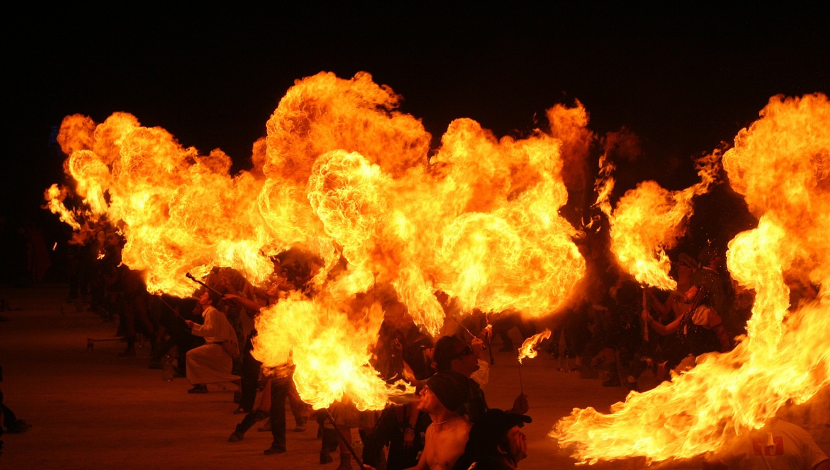“Do I mind if you smoke? I don’t mind if you burst into flames. Just don’t light that cigarette.” — Anonymous, derived from Sarah Bernhardt’s comment to Oscar Wilde
Spontaneous human combustion (SHC) is an idea first proposed by Paul Rolli in 1746. It seized the imagination of a gullible public. Since then, there have been hundreds of reported cases, recently in Ireland (in 2011), where the coroner reported the cause of death as SHC, and in Germany (in 2015).
Most thinking people are skeptical of the notion of SHC. As a result of that skepticism, there is also growing skepticism about spontaneous combustion of any kind. That’s unfortunate because spontaneous combustion is a real thing. Materials that can spontaneously burst into flames are called “pyrophoric”, and there are several types of pyrophoric materials.
Pyrophoricity
A liquid or solid is pyrophoric if it can ignite spontaneously after being exposed to air for 5 minutes or less. A gas is pyrophoric if it can ignite in air at or below 129° (54 C) without any ignition source.
Low Autoignition Temperature
There are several reasons for a material to be pyrophoric. One is that it has a low auto-ignition temperature (AIT), the temperature at which the material bursts into flame without an ignition source. Ray Bradbury famously described the AIT of paper as 451°F. Paper will autoignite, but it is not pyrophoric because its AIT is so high. White phosphorus, on the other hand, is a solid with an AIT of 93°F (34 C). It is pyrophoric. So is the liquid, triethyl borane [ B(C2H5)3 ], which has an AIT of -4°F (-20 C) and the gas, silane [ SiH4 ], which has an AIT of 70°F (21 C).
Formation of Unstable Oxides
Another reason for a material to be pyrophoric is because it reacts with air to form an unstable oxide. That unstable oxide then reacts exothermically with water to generate hydrogen gas and heat. The heat will ignite the hydrogen. Examples of this kind of pyrophoricity include sodium and potassium. Typically, there is enough water vapor in the air to which the pyrophoric material is exposed to drive the second part of this ignition process.
Release of Flammable Gases Other Than Hydrogen
Another type of pyrophoric material includes alkyl metals and alkyl non-metals. Instead of generating hydrogen when they come into contact with moist air, they release the alkane and enough energy to ignite it. Examples of this kind of pyrophoricity include methylsilver, triethylarsine, and propylcopper.
Hydrogenation Catalysts
Hydrogenation catalysts include Raney nickel, palladium on activated carbon, and platinum oxide. They are each finely divided, porous solids with an enormous surface area per unit of volume. Activating these catalysts saturates their vast surface area with adsorbed hydrogen. Later, after catalyzing a hydrogenation reaction, they finish saturated once again with adsorbed hydrogen. Then, when these catalysts dry out and become exposed to air, the hydrogen ignites. So, while bulk nickel, palladium, and platinum oxide are not especially combustible, the catalyst form is quite pyrophoric.
Spontaneous Combustion – Not A Myth
If someone mentions a case of spontaneous human combustion, you are quite right to be skeptical. If someone mentions an instance of stuff spontaneously bursting into flames, skepticism is less warranted. The stuff may be pyrophoric.
There are a lot of pyrophoric materials. Carnegie Mellon University has published a partial list of pyrophoric materials. While not exhaustive, it is a long list. Check it out if you want to get a better idea of what might be pyrophoric. If you are dealing with pyrophoric materials, figure out how to keep air away from it.
P.S. I know that “pyrophoria” is not the right word; “pyrophoricity” is. “Pyrophoria” just seems like it should be the right word. –Mike

Love this! Very informative! Have you ever thought about doing a podcast?